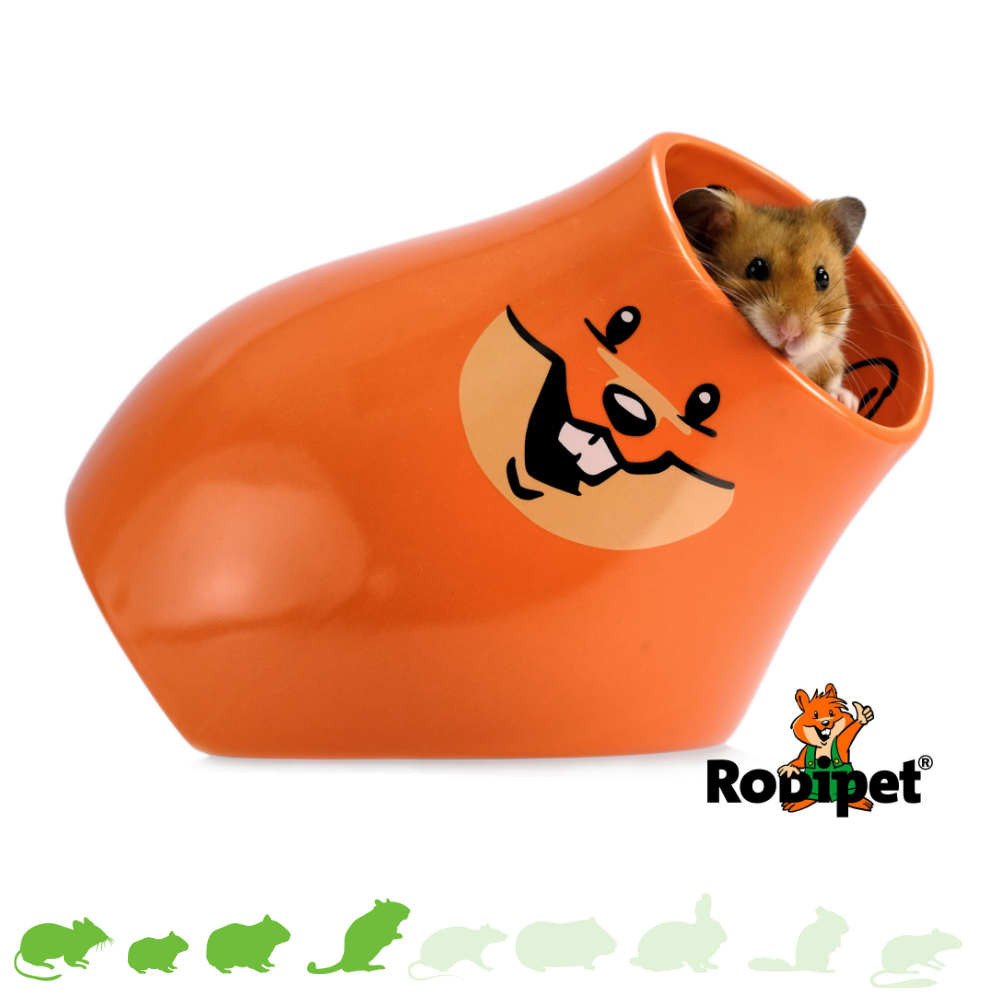What is the difference between Terracotta and Ceramic for Rodents?

What is the difference between terracotta and ceramic? What are the advantages of terracotta over ceramic? Can urine withdraw easily? We answer these and many other questions about terracotta and ceramics in our new blog!

It's pottery
Terracotta is derived from the Latin terra (earth), and the Italian cotta (baked). Both terracotta and ceramics are pottery. The finish makes the difference between the two. Terracotta is unglazed, hard fired pottery. This is also ceramic, with an extra glaze layer as an addition.
Terracotta = unglazed pottery
Ceramic = glazed pottery.
What are the benefits of terracotta for rodents?
The main advantage of terracotta is its roughness. Thanks to the absence of the enamel layer, the surface remains rough and that in turn ensures that the nails of rodents can wear well. The condition is that the animals regularly walk over it. In addition to the nail-wearing effect, terracotta is cool in the summer, which is very pleasant on hot days.
What are the disadvantages of terracotta?
The lack of the glaze layer makes terracotta porous. You can compare the material with a hard sponge. Moisture can easily withdraw, so also urine. However, we have experimented a lot with this and luckily terracotta is also washable and flushable. Just like a sponge, it can therefore be rinsed under water, as it were. It does take some time to dry after that.

What to do if urine withdraws?
If animals urinate on terracotta, the urine can unfortunately also penetrate the material. It can be rinsed out with water, but as with Muisjes, for example, this is not always sufficient. The nasty smell of the puddles can remain in the material. To prevent this, we recommend a urine spray.
First rinse the terracotta well under lukewarm water and spray the affected surface well with a urine spray. Let it soak in and then rinse it out again under lukewarm water.
By rinsing in water, the fibers of the material become saturated with moisture. When the surface is still wet, the urine spray can penetrate better and deeper into the material, so that all urine residues are tackled.
What are the advantages of ceramics?
The often hard glaze layer gives the earthenware extra protection. Not only against a knock, but also against moisture and therefore also against urine. Ceramics can have a complete urine shower and will not start to smell quickly. The glaze layer protects the material against absorption of both moisture and odors. Thanks to the smooth top layer, ceramics can therefore be cleaned very easily.
Ceramic has an insulating effect, which means that a ceramic house stays nice and cool in the summer, but nice and warm in the winter. It is a well insulated house!
What are the disadvantages of ceramics
Unfortunately, due to the glaze layer, ceramics have lost the nail-wearing effect. We can't really think of any disadvantages of ceramics.
Place ceramics and terracotta in the fridge?
In the summer we often get the question whether these materials can be stored in the fridge or freezer? The idea behind this is to make the material as cool as possible, so that the animals have more and longer cooling. However, we do not recommend this. Ceramic and terracotta is baked pottery. This does not always behave as you would like in the refrigerator. The temperature difference can cause it to crack or break.
What's cooler in the summer?
Both terracotta and ceramic are both cool. If we have to choose which one is cooler, then ceramic is the winner. This again has to do with the glaze layer. This ensures that the surface remains cooler, but in winter it again ensures insulation of the internal heat, so that it remains nice and warm in the house, for example.
What is warmer in winter?
In fact, it doesn't get that cold at home at all. In addition, most rodents stay in heated rooms or have a thick pack of bedding at their disposal, in which they can hide. If it does get a bit cooler, both terracotta and ceramics are suitable. Ceramic could be minimally better thanks to the glaze layer acting as extra insulation.
So we can actually come to the conclusion that both are super fun and have beautiful properties. It just kind of depends on what you need. If you want a nice house where the nails can also wear out, then terracotta is the best choice. However, if you want a nice cool house that is easy to clean, then ceramic is "the best way to go"!
If you have any questions about these or other materials, be sure to let us know!




Comments
Be the first to comment...